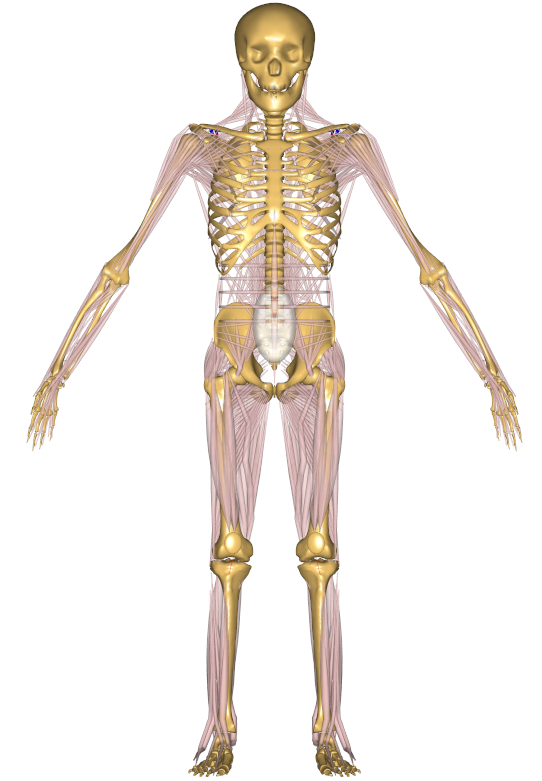
Overview
The AnyBody Managed Model Repository(TM) (AMMR) is a unique open collection of human body parts represented as mechanical elements, and examples of how to model activities of daily living (ADL).
The AnyBody Managed Model Repository contains a generic human body model with an unprecedented level of detail, which can be configured to contain only certain body parts, scaled anthropometrically and by using available data from medical images.
All provided examples vary in their nature, underlying modeling methods and data, physiological mechanisms, research goals, and so on. Thus, the AnyBody Managed Model Repository provides a large range of modeling techniques and tricks that can be adopted by simple copying of a piece of code or an entire model.
Applications for various fields can be developed by looking at available models:
- Ortopedics and rehabilitation
- Automotive/Aerospace/Defense
- Sports
- Daily activities
- Validation examples
Human Body Model
The generic body model is comprised of mechanical elements (rigid bodies, passive and active spring elements, mechanical joints, etc.) representing soft and hard tissues of the human body. Each body part is implemented through utilizing data from detailed cadaveric/anatomic studies ensuring high accuracy and anatomical fidelity of the models:
- Twente Lower Extremity Model
- Mayo Shoulder Aarm Model
- Glasgow-Maastricht Foot Model
- And many more
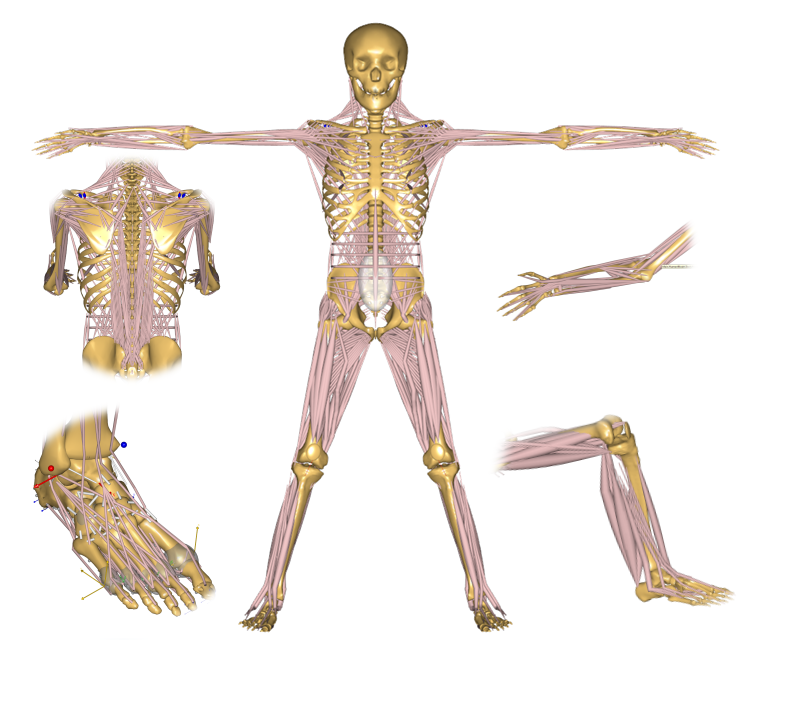
Examples in Orthopedics
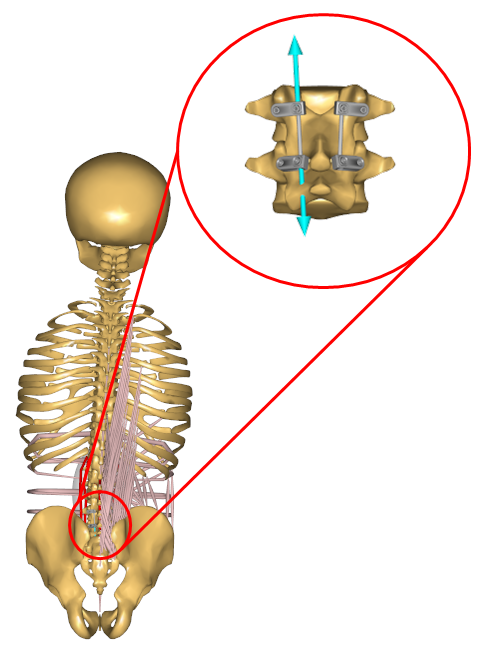
Spine Fixation Device model where rod rigidity governs posture of the human, and associated compressive/tensile forces in the rods
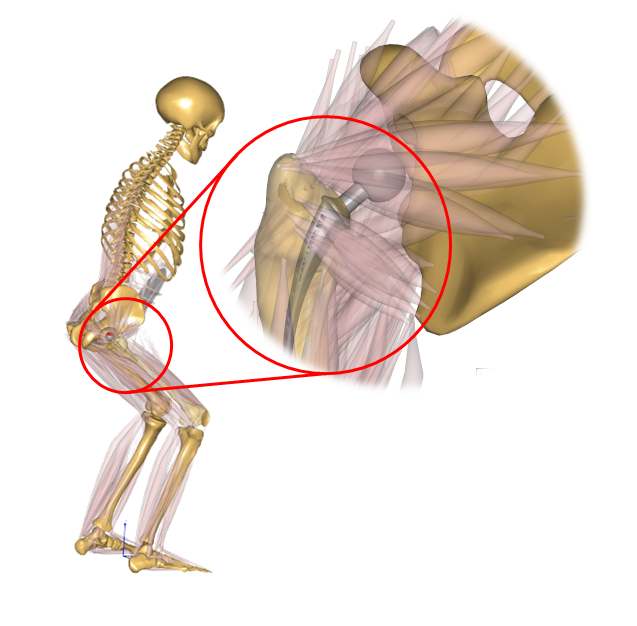
Deep knee bend model with a Total Hip Replacement, where acetabular cup and stem geometries govern kinematics of the subject.
Sports Examples
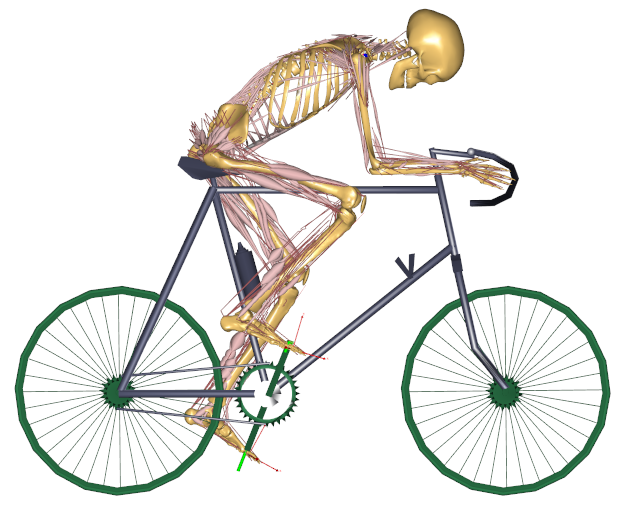
A model of a human cycling
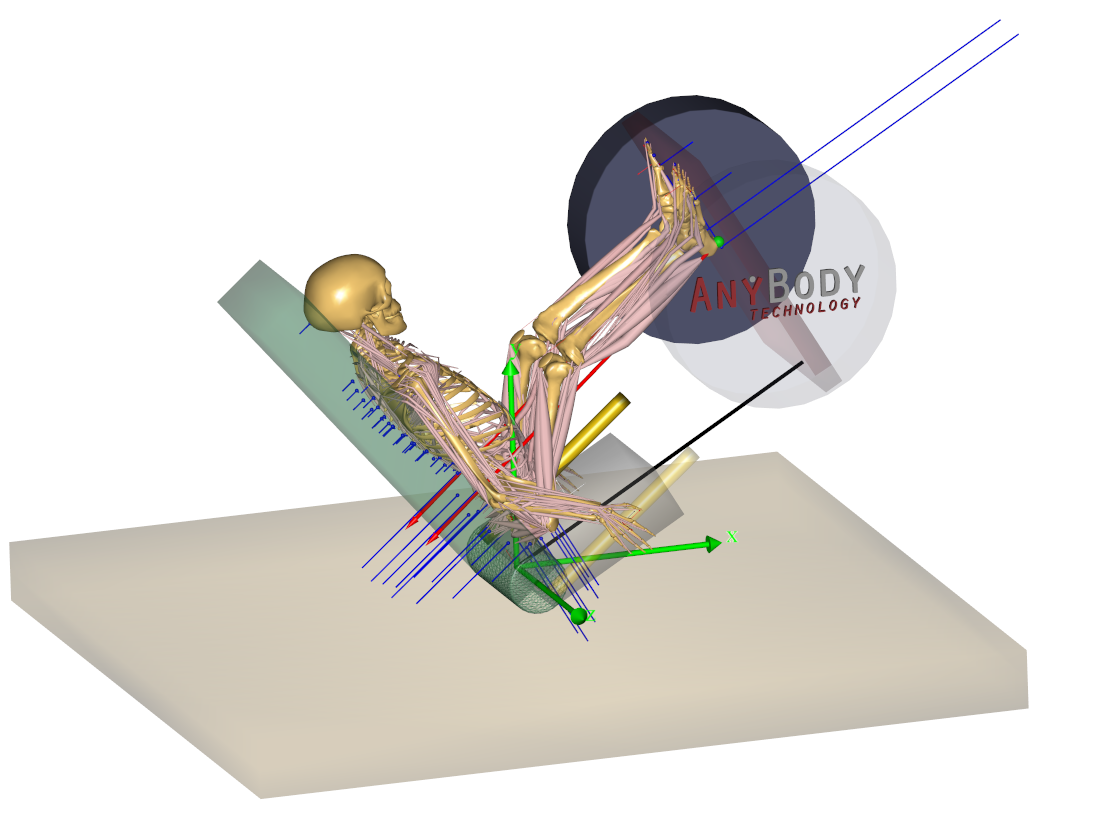
Leg press machine model with conditional contact between human feet, back and the surfaces of the leg press.
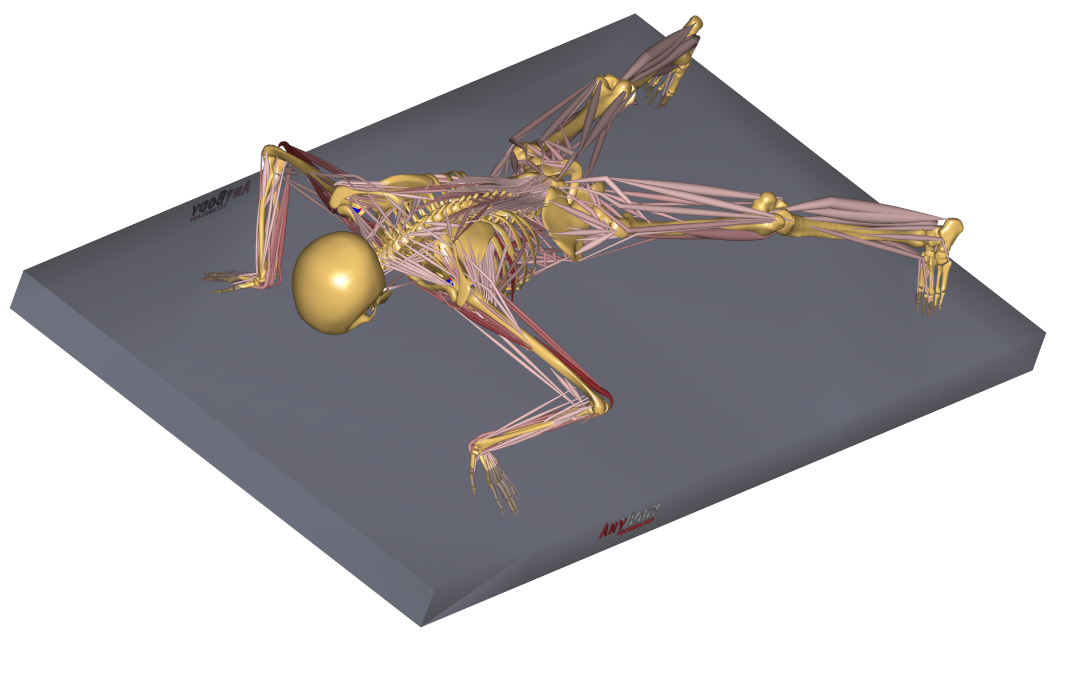
A model of a push-up
Activities of Daily Living
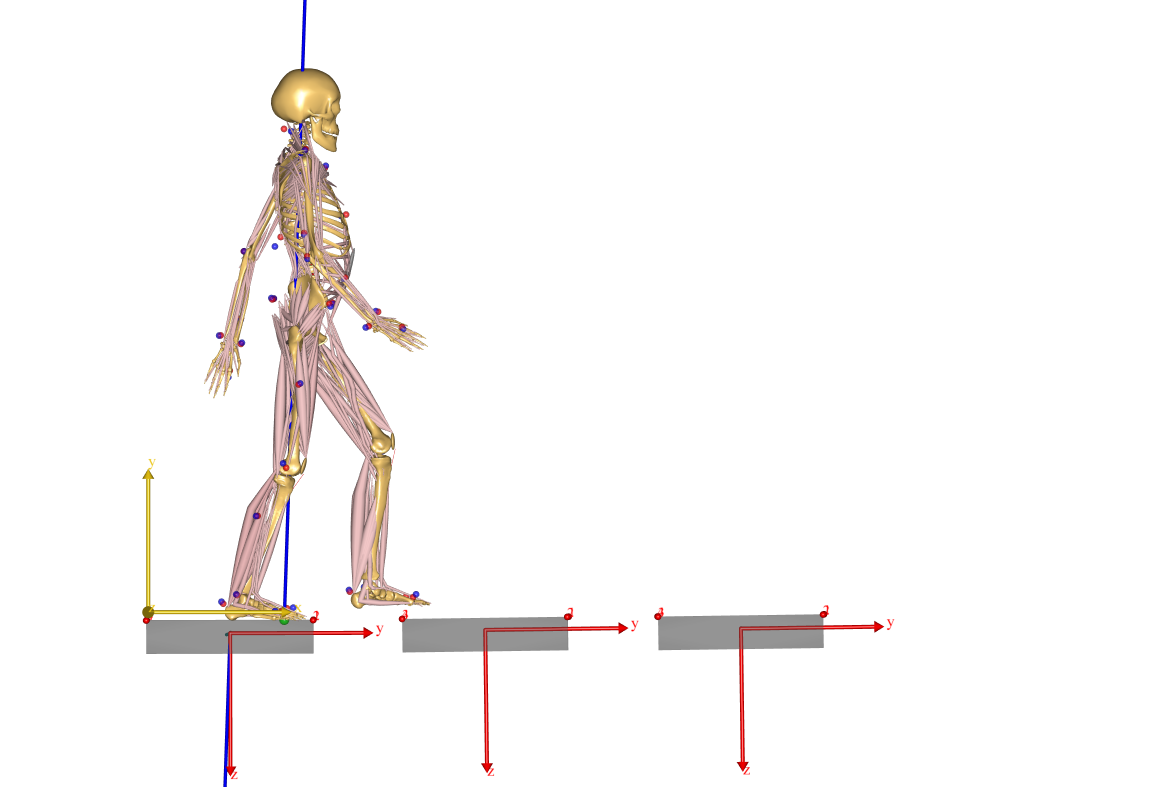
This model is based on a Motion Capture (MoCap) experiment, where human gait was recorded and the data from reflective markers and force-plates was utilized. This model can be a good start for any model requiring MoCap input.

This is the most basic model of a human, where the human posture is controlled by the user. It is possible to model any elementary motion of body parts by prescribing initial posture and velocities.
Examples for Automotive/Aerospace industries
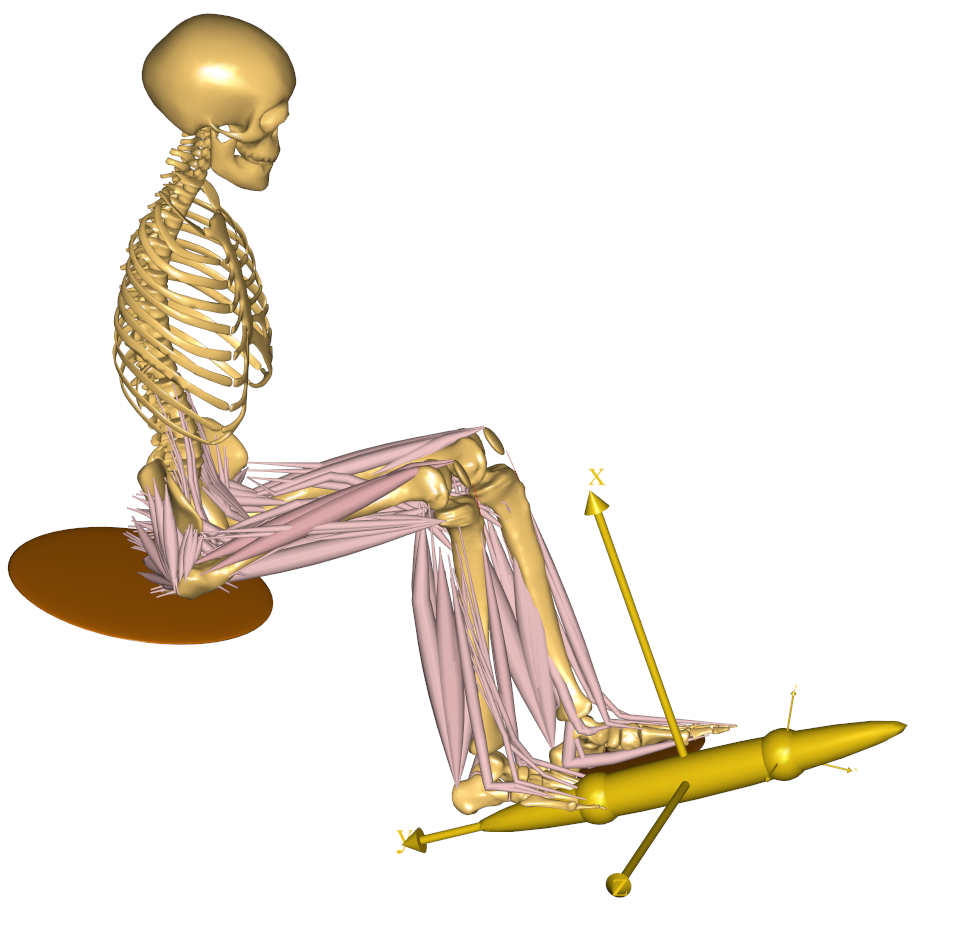
This model is a simple example how to simulate interaction of the human body parts with the functional elements of your product.
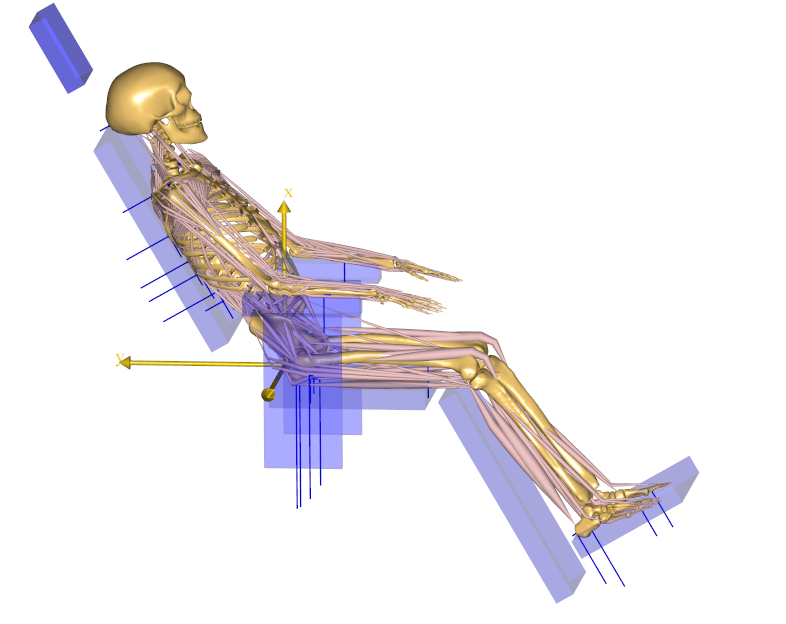
This model demonstrates a simulation which could be used as a starting point to evaluate seating comfort or any other similar human-environment interaction mechanisms.
Validation studies

This set of models allows comparison between modeled intervertebral loads and intradiscal pressures measured in-vivo by Wilke et al. 1999. All computed intradiscal loads are normalized by the body weight and percentage as compared to the standing posture.
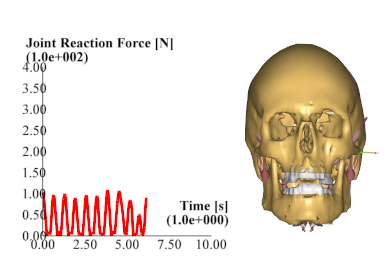
The mandible model for chewing and clenching that compares computed loads in the temporomandibular joint with in-vivo measurements.
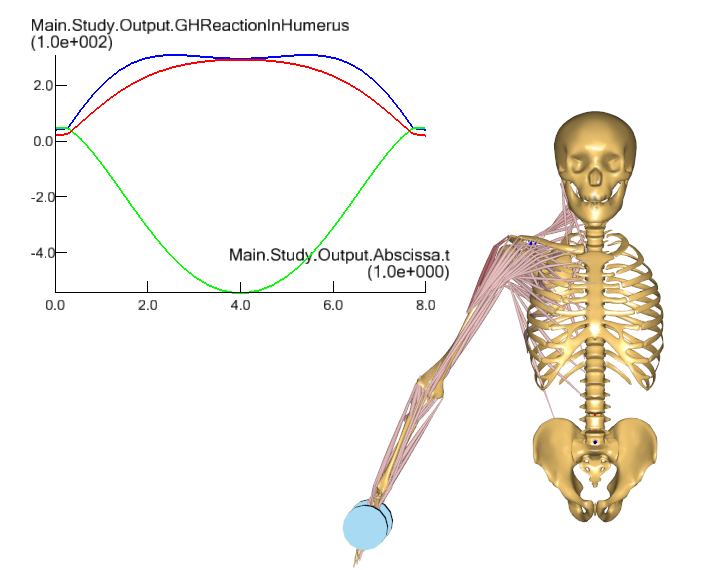
This is a simple arm abduction model to compute joint reaction forces to be able to compare with the in-vivo measurements from the OrthoLoad dataset.